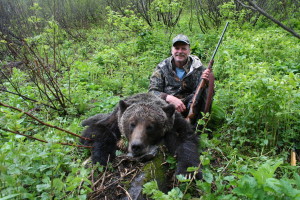 In the early days of taxidermy, the role of the taxidermist was solely to display a set of antlers, horns, or a hide. With the development of new materials, modern taxidermy has become a marriage of science and art. The science is a knowledge of the exact characteristics of anatomy and the movement of an animal. The art is the ability to transfer that knowledge into an accurate replica of the animal. The skilled taxidermist today is able to produce a mount that doesn’t just display a set of antlers; rather, the mount could easily be mistaken for a live animal.
In the early days of taxidermy, the role of the taxidermist was solely to display a set of antlers, horns, or a hide. With the development of new materials, modern taxidermy has become a marriage of science and art. The science is a knowledge of the exact characteristics of anatomy and the movement of an animal. The art is the ability to transfer that knowledge into an accurate replica of the animal. The skilled taxidermist today is able to produce a mount that doesn’t just display a set of antlers; rather, the mount could easily be mistaken for a live animal.
My education in the science of taxidermy began in my early teens. I grew up in rural British Columbia, Canada, in an era when, during hunting season, there was always a gun behind the kitchen door. Every day after school I would be out hunting, observing, and learning the habits and subtle traits of our province’s wildlife. Since then I have continued a life in the outdoors, enjoying hunting, fishing, and guiding. Along with that, I spend five months of the year flying a float plane for a charter company in the West Chilcotin region of British Columbia.
Putting this lifelong study into practice, I am aware of such things as what angle a bull moose holds its ears when its head is up or when its head is down, all the tiny details that make the difference between a mount looking like a good mount and looking as though it were alive.
My education in the art of taxidermy began in 2000 when I was fortunate enough to begin an apprenticeship under an incredibly talented award-winning taxidermist. Upon his semi-retirement in 2003, I started my own company, Wild Ridge Taxidermy. Since that time I have had the pleasure of working for several different guide outfitters as well as many private individuals.
My mounts are now in showrooms across Norway, Denmark, Sweden, Germany, Italy, the Netherlands, Australia, and throughout the United States and Canada.
– Ian
Shipmaker
